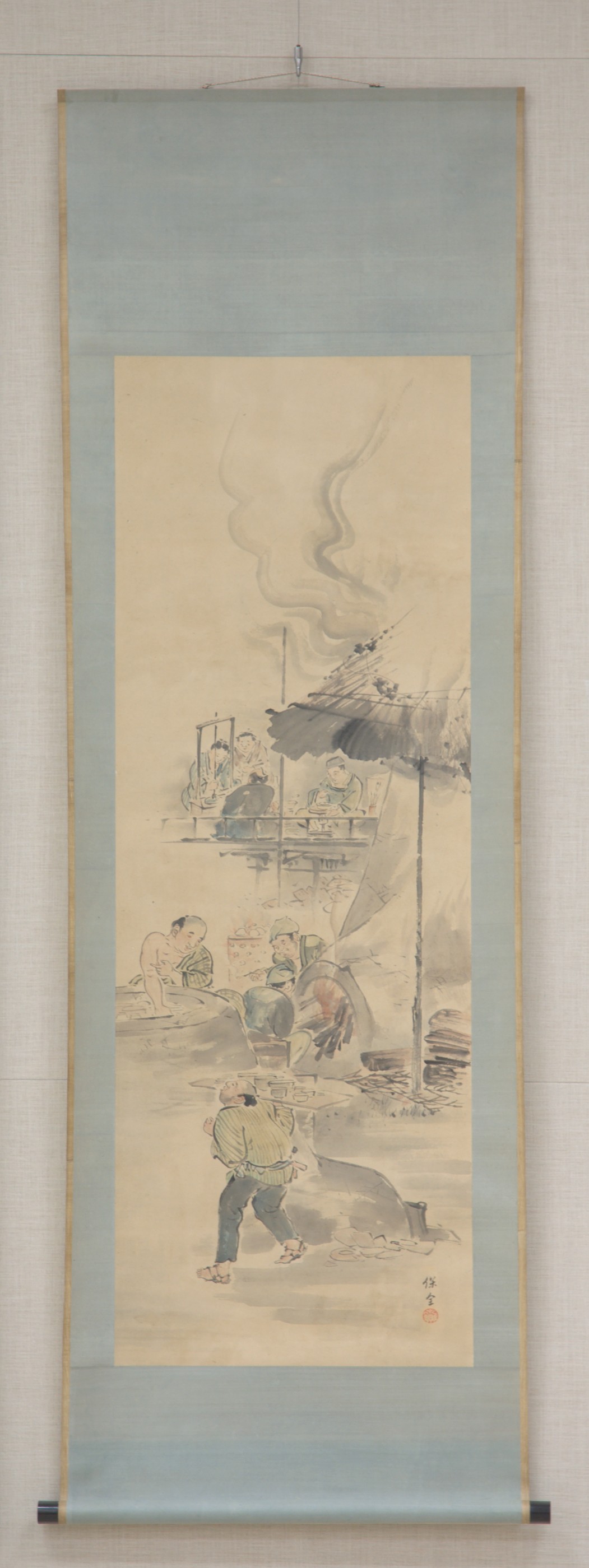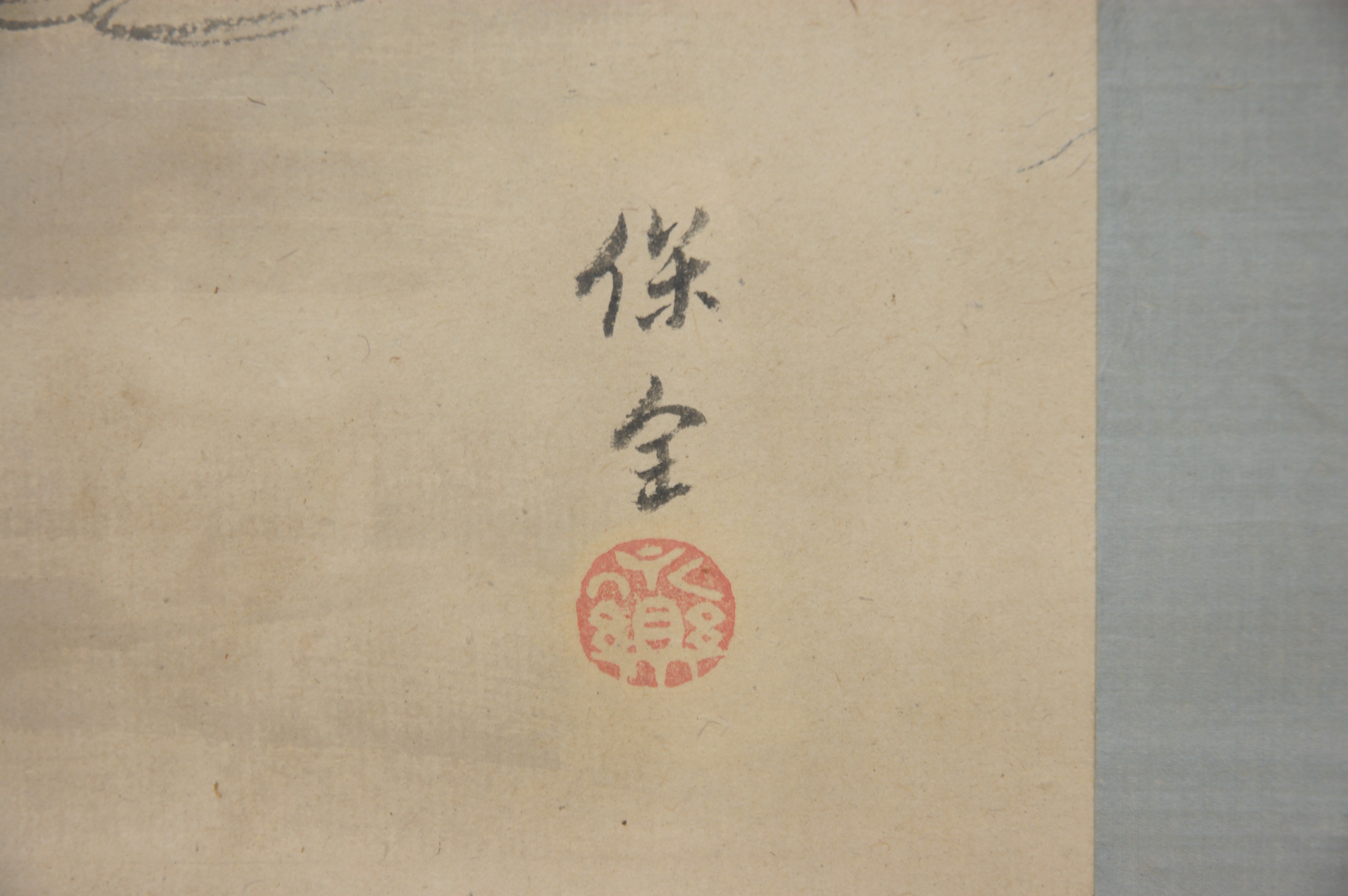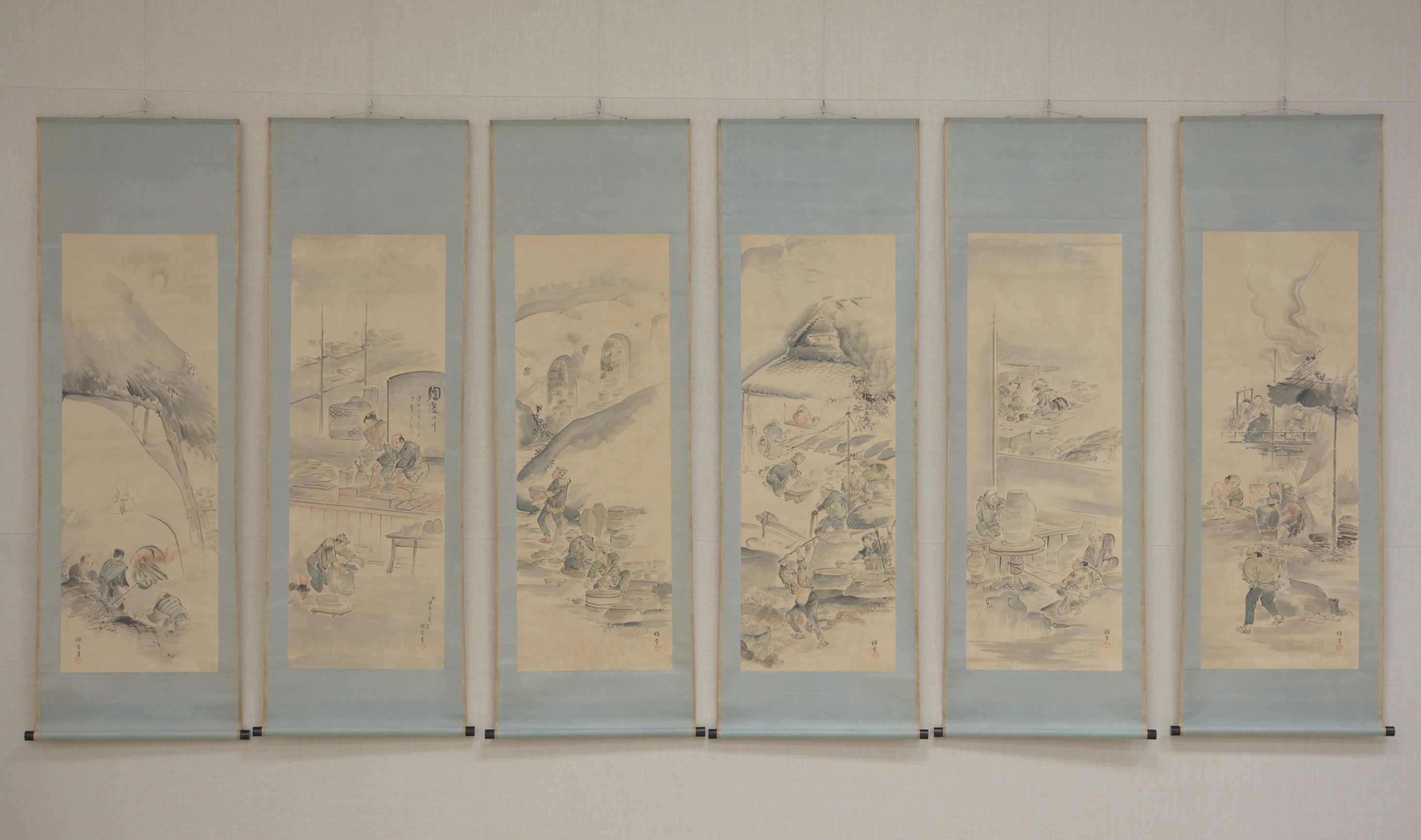Making Ceramics
Eiraku Hozen Japanese
Not on view
Hozen, the eleventh-generation master of the Nishimura family, learned pottery techniques in Kyoto and produced tea utensils prized by the Sen family of tea masters. After 1827, he sealed his works as “Eiraku.” He produced a variety of fine-quality wares, most of them special orders, including blue-and-white porcelain, copies of Chinese porcelain, and Cochin-style (Kōchi ware) works with polychrome glazes. One of his signature techniques was the delicate application of overglaze gold patterns (kinrande) on red ground. Furthermore, Hozen made numerous copies of Ninsei ware. He was one of the most influential ceramists in Kyoto in the nineteenth century. An amateur painter, he created this series of six hanging scrolls (18.77.2–.7) depicting the process of ceramic production.
Smoke billows from the fired kiln and more wood is fed into the firebox. An assistant approaches carrying a board with bowls ready for firing. In the background, a craftsman applies decoration with a brush.
Due to rights restrictions, this image cannot be enlarged, viewed at full screen, or downloaded.
This artwork is meant to be viewed from right to left. Scroll left to view more.





